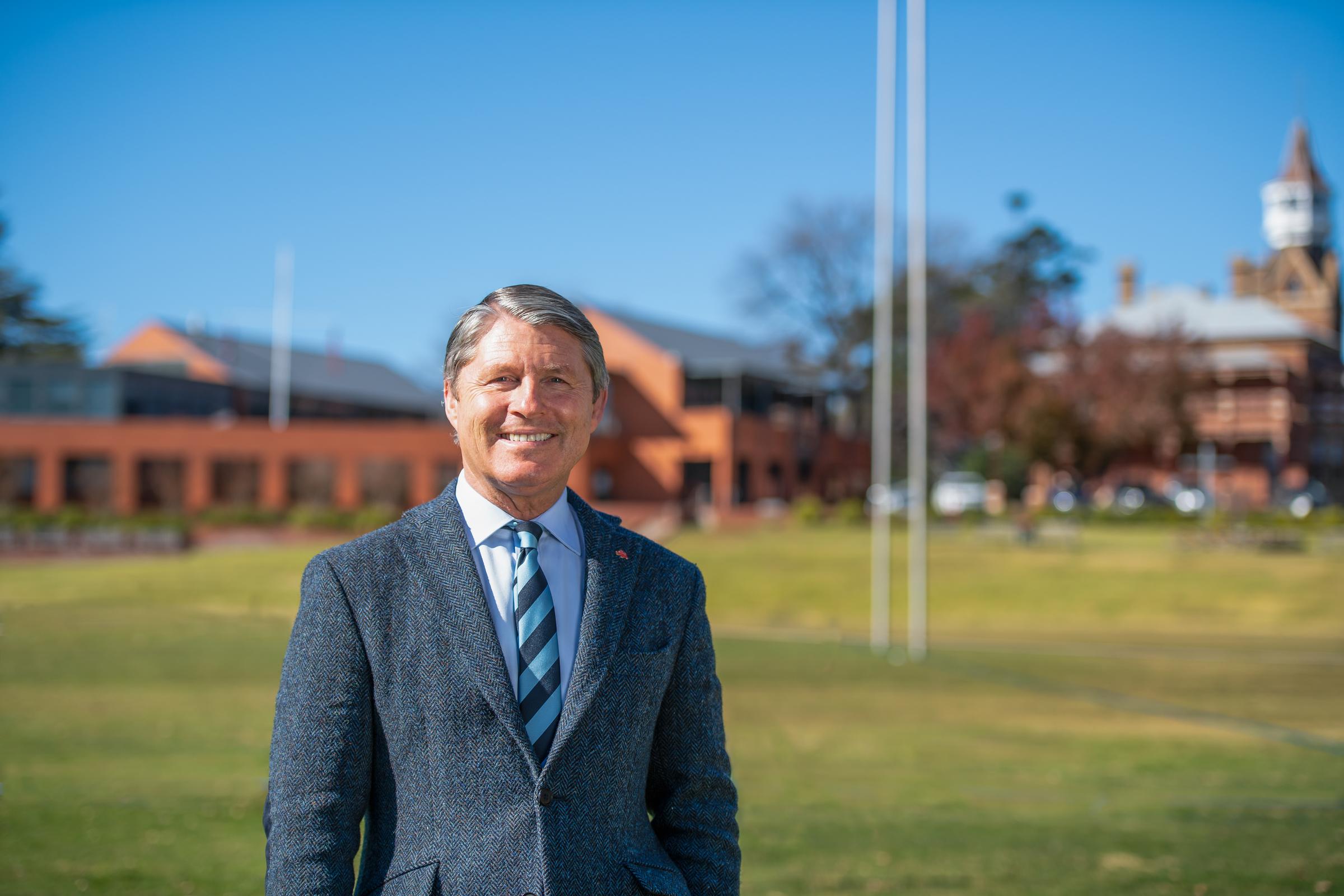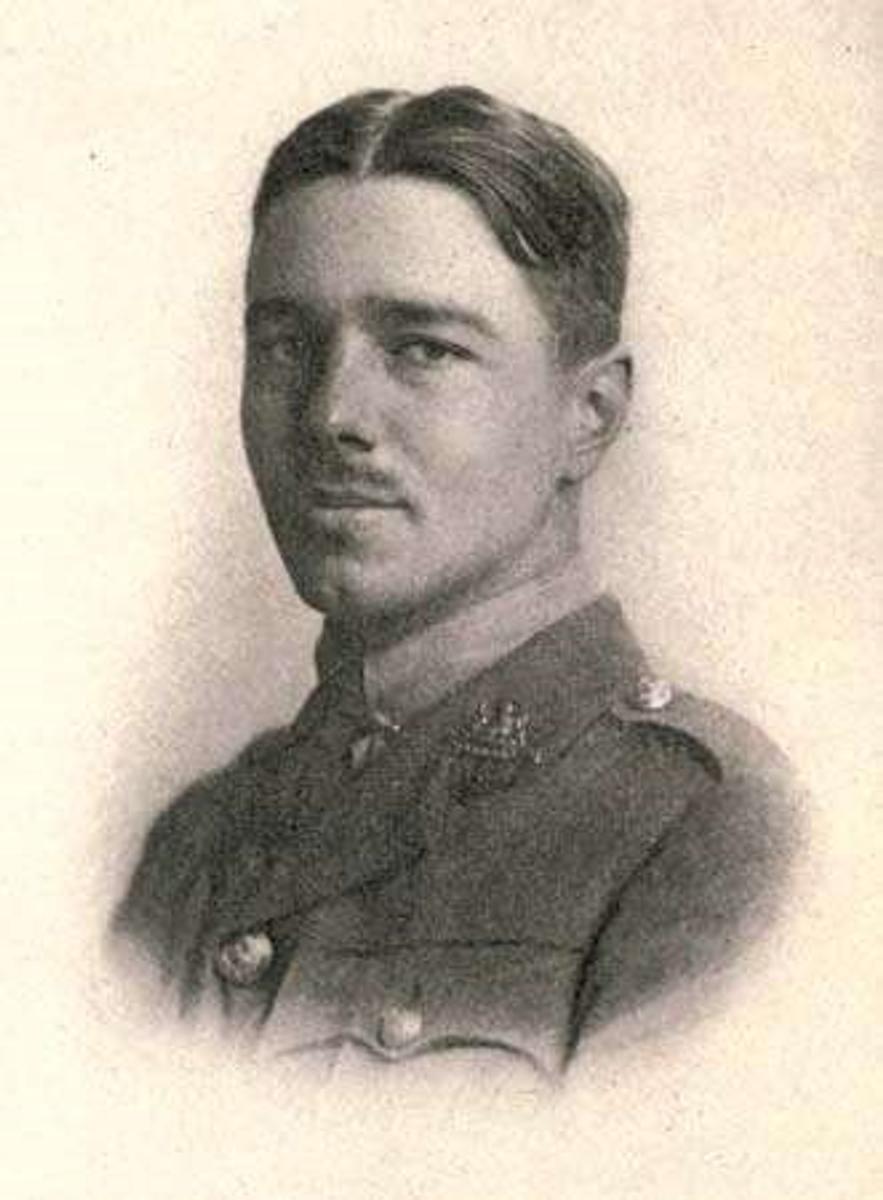Message from the Principal

Historia vitae Magistra (History, the Teacher of Life).
However, man continues to fail to learn from its lessons.
Centenary of Armictice Day 2018
Last Sunday, on Remembrance Day, many at home and across the globe paused as a mark of respect to those who died or suffered in war and armed conflict. Remembrance Day this year holds special significance.
Why – because at 11am on 11 November 1918 the guns of the Western Front fell silent after four years of continuous warfare. With their armies retreating and close to collapse, German leaders signed an Armistice bringing to an end the First World War.
It became known as the Great War, and for good reason. It’s scale was unprecedented. It sparked the mobilisation of 70 million people across many nations. Its violence shattered great empires. Its images have never lost their power. To a great degree those images of the muddy moonscapes of the Western front have served to define, for succeeding generations, the horror of war.
The magnitude of destruction and death that ensued had never been witnessed by the world before and its horrors led to the conflict being labelled ‘The War to end all Wars’. History has revealed how misguided this statement was, and at this very moment, parts of Europe and the Middle East are engaging in senseless armed conflicts that are resulting in tragic loss of innocent lives.
The scale of death emanating from this global carnage was immense causing great sorrow and mercilessly savaged a generation of young men. One can only be overcome with the feeling of senseless loss of life when reading the captions etched upon the gravestones of so many of those young men. Words such as Dear Son, God thought it best to take thee to heavenly rest, Greater love hath no man than this, A daily thought and an everlasting sorrow and A soldier of the Great War, known unto God.
The centenary of the Armistice of World War I affords an opportunity to pause and reflect upon the horrors of armed conflict and the great sacrifice made by so many who saw it as their duty to lay down their lives for God, King and country. The greatest sadness of all is that, one hundred years later, in 2018, such senseless killing continues and nations remain in conflict.
So what have we learned from the catastrophe of the Great War?
We have learned to honour those who fell or returned bringing with them tears of the soul that would not heal.
We have learned that Australia’s troops were equal to the world’s finest.
We learned that wars do not end wars. 21 years after Armistice Day in 1918, Germany invaded Poland and the long and ghastly sequel of the Second World War began.
I hope we have learned to put as much sweat and grit and courage into building justice and peace – because war, while occasionally unavoidable, too often represents a failure to solve problems by intelligent means.
We have learned that those who forget the lessons of history, inevitably repeat them.
I close this reflection with one of Wilfred Owen’s poem of the Great War, ‘Dulce et Decorum Est’, where Owen’s imagery graphically conveys the horrors of war. His words reveal that young men were not dying noble, heroic deaths; the reality was obscene, ghastly and tragic. This poem poignantly exposes Horace’s destructive lie about the value of patriotic sacrifice and has a hauntingly contemporary relevance as gas attacks against unsuspecting victims remain par for the course on the Middle Eastern battlefields, where chlorine, used to such devastating effect in World War I, continues to serve as a favourite weapon for the Assad regime and some of its opponents.
Wilfred Owen, wrote some of the best British poetry on World War I, and composed nearly all of his poems in slightly over a year, from August 1917 to September 1918. In November 1918 he was killed in action at the age of twenty-five, one week before the Armistice. Only five poems were published in his lifetime. Almost all of Owen’s poems, therefore, appeared posthumously.
“Dulce et Decorum Est,” one of Owen’s most moving poems and had its origins in Owen’s experiences of January 1917, describes explicitly the horror of the gas attack and the death of a wounded man who has been flung into a wagon. The horror intensifies, becoming a waking nightmare experienced by the exhausted viewer, who stares hypnotically at his comrade in the wagon ahead of him as he must continue to march.
Dulce et Decorum Est
Bent double, like old beggars under sacks,
Knock-kneed, coughing like hags, we cursed through sludge,
Till on the haunting flares we turned our backs,
And towards our distant rest began to trudge.
Men marched asleep. Many had lost their boots,
But limped on, blood-shod. All went lame; all blind;
Drunk with fatigue; deaf even to the hoots
Of tired, outstripped, Five-Nines that dropped behind.
Of gas-shells dropping softly behind.
Gas! Gas! Quick, boys - An ecstasy of fumbling
Fitting the clumsy helmets just in time;
But someone still was yelling out and stumbling
And flound'ring like a man in fire or lime, -
Dim, through the misty panes and thick green light,
As under a green sea, I saw him drowning.
In all my dreams, before my helpless sight,
He plunges at me, guttering, choking, drowning.
If in some smothering dreams you too could pace
Behind the wagon that we flung him in,
And watch the white eyes writhing in his face,
His hanging face, like a devil's sick of sin;
If you could hear, at every jolt, the blood
Come gargling from the froth-corrupted lungs,
Obscene as cancer, bitter as the cud
Of vile, incurable sores on innocent tongues, -
My friend, you would not tell with such high zest
To children ardent for some desperate glory,
The old Lie: Dulce et decorum este
Pro patria mori
Dulce et Decorum Est is a Latin phrase taken from an ode by Horace meaning ‘It is sweet and right’. The full phrase that completes the poem Dulce et decorum este pro patria mori translates as ‘It is sweet and right to die for your country’, a phrase that attracted disdain after the War and came to be described by some as ‘The Old Lie’.
International Student Exchanges
Our International Student Exchange program is starting to take shape. I see this as being a very important program that will provide some fantastic life experiences for those who are selected to represent the School overseas and it will help develop within us all greater international understanding and awareness. Qualities so important in the global environment in which we live and work.
This term we welcome Mohale Mogale to Kinross Wolaroi from Michaelhouse in South Africa. Michaelhouse is a premier school in South Africa and we are delighted to have Mohale here as their representative.
Currently three of our students are in South Africa – Erin Bracks and Niamh McPhee at St Anne’s and Jack Wakem at Michaelhouse. Jetta Kennett and Hunter Rose are currently in Scotland at Strathallen School, located one hour north of Edinburgh. And four of our students are spending five weeks in France at Institute Saint Dominique in Pau, South West France. We are being represented by:
Adelaide Gavin and Emma Wright in Year 10 and Grace Birmilli and Molly McLean in Year 9
We wish all our representatives the best of luck and I am sure they will prove to be outstanding ambassadors for the School. We look forward to welcoming their exchange counterparts from France, Scotland and South Africa early next year.
Congratulations
There are a number of Student Achievements that I would like to acknowledge:
- We have been recently informed that Owen Bloomfield has won an ICAS Medal for English. This is an international competition run by the UNSW to acknowledge Academic Excellence
- Two of our gifted poets have been shortlisted for Poetry Object 2018. This is a prestigious poetry competition with entries coming from all over Australia, New Zealand, and Asia. Both Maddie Hook and Lila Pearce have been shortlisted for publication. A fabulous effort.
In sport:
- Fletcher Doyle played in the Lloyd McDermoth National Indigenous Under 15 Rugby Team in QLD during the October break.
- Julia Stuart continues her success in Polocrosse, this time she was a member of the victorious NSW team at the National Championships held recently in Perth.
- And recently, in our KWS Under 16’s cricket team that is playing in the Centenary Cup – Brad O’Brien scored an unbeaten 155 runs with the bat. Outstanding!
HSC Major Project Congratulations
This year, an incredible number of Industrial Technology students (13 to be precise) have had their Major Projects nominated for possible inclusion in the annual exhibition – InTech.
Nicholas Booth, James Commins, Hamish Corcoran, Karl Fitzalan, Ellis Hawker, Lachlan Hunt, Charles Jenkins, Jack Jones, James Moon, Timothy Mutton, Jack O'Brien, Thomas Rouse and Matthew Staniforth.
I am also delighted to announce that the Major Textiles Project designed by Jade Lefebvre has been selected for inclusion in the Texstyle annual exhibition of works by HSC Textiles and Design students.
We will be advised in early December if any of our student’s Industrial Technology and Textile and Design projects have been selected for Shape 2018, the combined exhibition of HSC Technology projects at the Powerhouse Museum, Museum of Applied Arts and Sciences (MAAS), Sydney, from 22 February to 5 May 2019.
Congratulations to all of these students on their outstanding achievements for their HSC Major Projects.
Dr Andrew Parry
Principal

